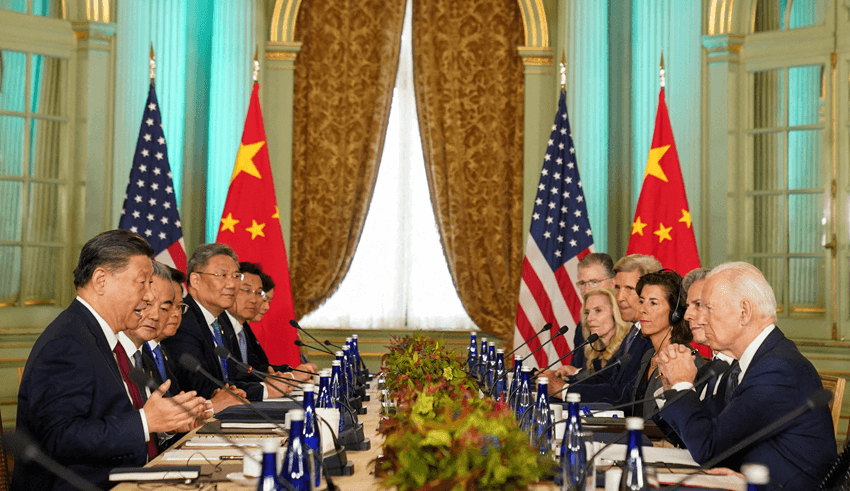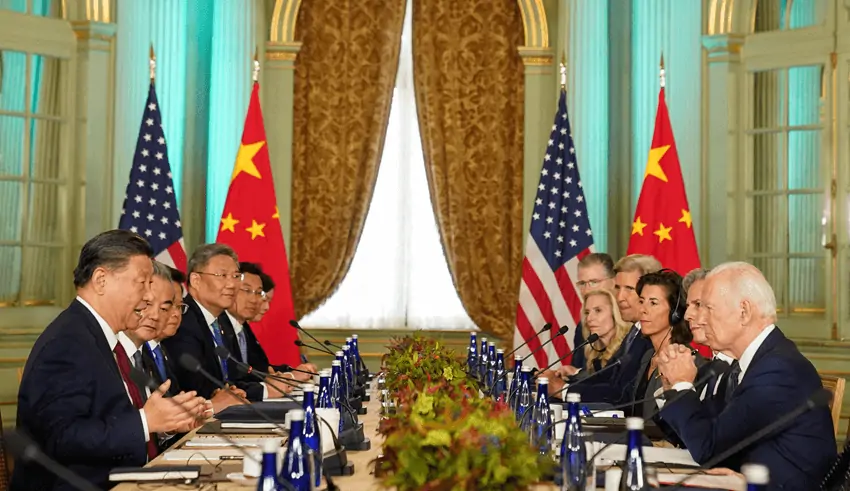

us china tussle for dominance will go into 2024
After a slew of US diplomats visited China and the Chinese Foreign Minister promoting healthy and sustainable China-US relations earlier this month in Washington, the two countries continue to tussle for dominance.
There has been little to no change in greater dialogue and communications between the US and China. But this hasn’t hindered trade between the two competitors. Chinese products still appeal to US consumers and China maintains its role as a stable hub for low-cost industrial manufacturing.
Experts say the key opportunity for China and the US lies in strengthening their unparalleled economic partnership. According to the US Trade Representative, the estimated China-US trade volume for 2022 was $758.4 billion, with US goods exports to China increasing by 1.7 percent (around $2.6 billion) in 2022, year-on-year and an impressive 39 percent from 2012.
US businesses want greater access to the Chinese market, which has a stable economic and political environment, safeguards intellectual property rights and has built a fair and just business environment. This can enhance confidence in foreign brands to invest in cost-effective, high-tech manufacturing, and benefit from China’s vast consumer market.
Robert Ross, a political scientist, believes the US and China understand each other perfectly well, but each country has its own national objectives and each has developed policies to advance their objectives. He highlighted that each country opposes the other’s objectives.
“US-China conflict reflects a great power conflict of interest. The rise of Chinese economy and military capabilities allows China to pursue a long-deferred objective – weakening of American alliances in East Asia and the corresponding erosion of US military encirclement of China’s maritime periphery from the Korean peninsula to the South China Sea. Over the past decade, Chinese coercive diplomacy against Vietnam, the Philippines and South Korea aimed to dissuade them from expanding defense cooperation with the US.”
Ross pointed out that China is using its greater economic clout to assume a voice in the global order commensurate with its authority and responsibility – the Belt and Road Initiative (BRI) and the Asian Infrastructure Investment Bank (AIIB).
To maintain the global order, the US is using its alliances and security partners to push back China. Ross says the US policy reflects its determination to resist the rise of China’s capabilities and the corresponding implications for the regional balance of power. “The US has adopted military, economic and technology policies to deny China the capabilities to challenge American’s comprehensive superiority and its regional and global leadership.”
And President Joe Biden clearly said it the US seeks to compete with China, and secure a win. Ross said as long as the US-China power transition persists, US-China competition over the distribution of power will persist.
The six attacks by ship sailing in the Singapore strait in five days this month has activated a spate increase…
A great relief for the global nations and the people of both the countries Indian & Pakistan as the massive…
The 2025 spy thriller ‘The Secret Path’ has captured international attention from the day of its premiere in April. This…
K-Pop has been a sensation in both the music and other entertainment industries across the world. Through their vibrant mix…
There are many genres in the web series of South Korean language, but the ‘psychological crime thriller’ will always have…
It was a moderate magnitude 5.6 earthquake that hit the Banda Sea, in eastern Indonesia on May 10, 2025 in…
This website uses cookies.
Read More